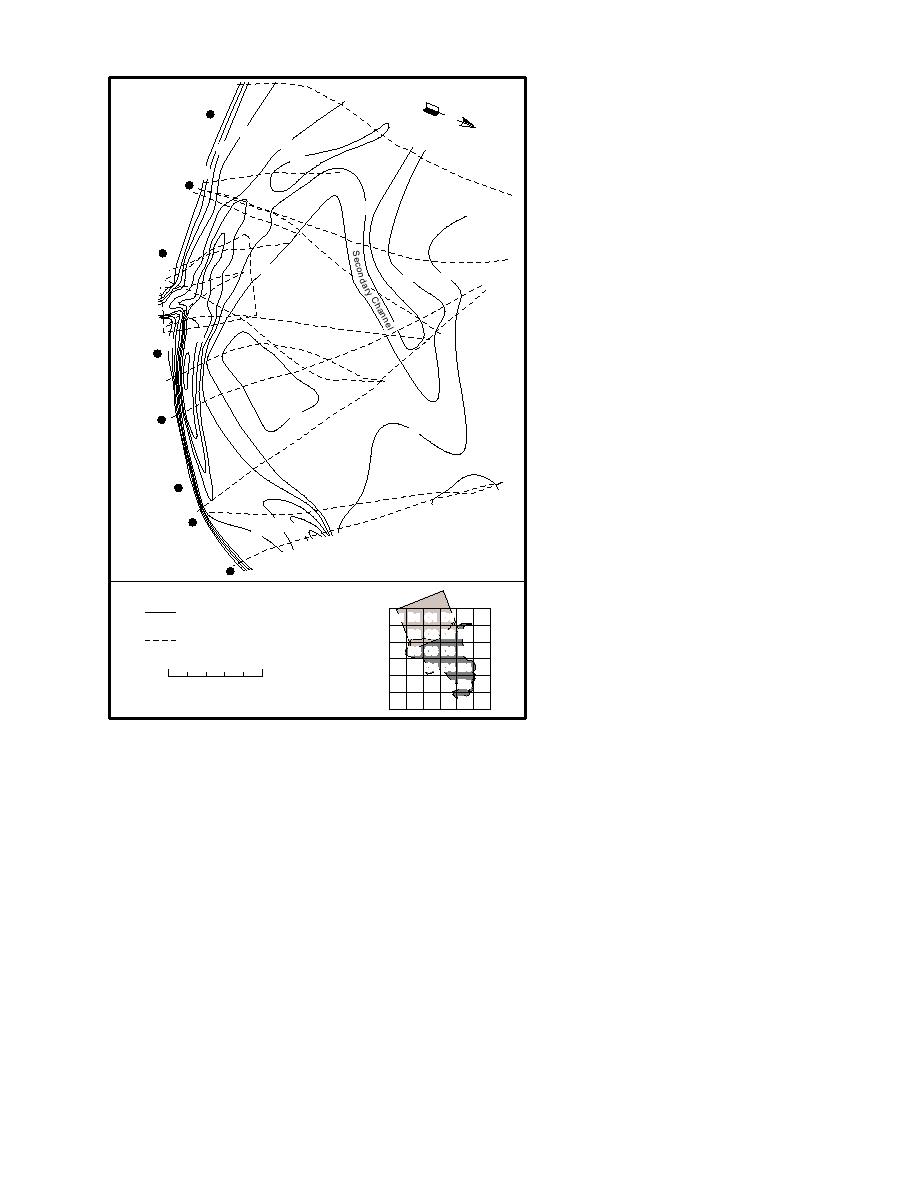
Coastal 7
N
6
8
4
10
0
Coastal 6
8
Coastal 5
Bar
6
4
6
EMgle R.
a
outh
14
0
CNew
oastal
Bar
4
4
Coastal 4
Coastal 3
Coastal 2
10
12
8
Coastal 1
(
Bathymetric Contour Line
A1 B1 C1 D1 E1 F1
L I = 2m)
C
A2 B2 C2 D2 E2 F2
Tocation of Echo-Sounding
A3 B3 C3 D3 E3 F3
ransect Lines
A4 B4 C4 D4 E4 F4
Figure 54. Bathymetry of Knik Arm near
A5 B5 C5 D5 E5 F5
0
500 m
the mouth of the Eagle River and adjacent
A6 B6 C6 D6 E6 F6
to the coast of ERF.
channel produces highly turbulent conditions with
example of why such monitoring is important;
large standing waves. As tidal flooding begins,
the B-Area has been considered clean of WP
and this sampling result shows that WP migra-
conditions change rapidly, with transitory areas
of severe turbulence and scour and back-eddies
tion can spread contamination within the Flats.
with minimal turbulence--conditions enhancing
sedimentation.
Bathymetric analyses of Knik Arm offshore of
KNIK ARM AND WP DEPOSITION
ERF and near the mouth of Eagle River in 1994
(Lawson et al. 1996) provided data that are inte-
The Knik Arm near the mouth of the Eagle
gral to identifying potential locations where WP
River is 910 km wide and has large tidal cycles
(9 m). At high tide, Knik Arm fills and spills
may be deposited after migration out of ERF
proper. These data showed various locations in
over into ERF. Currents are relatively weak by
Knik Arm, such as intertidal bars and other
comparison to those at low tide. At low tide, this
areas, where sedimentation is active. Such areas
portion of Knik Arm essentially becomes a braided
stream system with a main channel located di-
are migratory and can change extent and location
rectly off the coast of ERF. Rapid flow in this
over time.
61



 Previous Page
Previous Page
